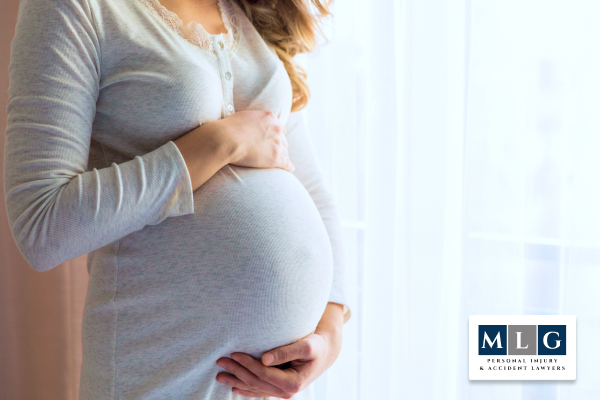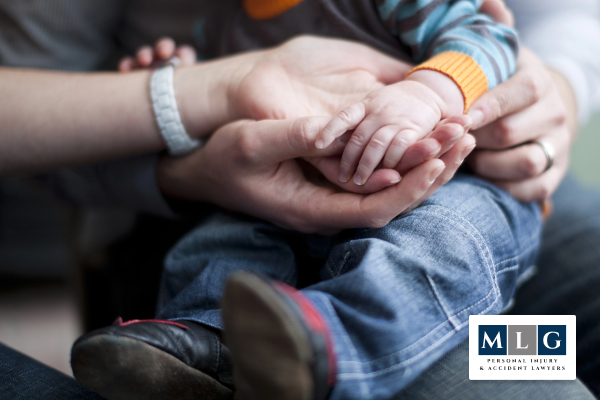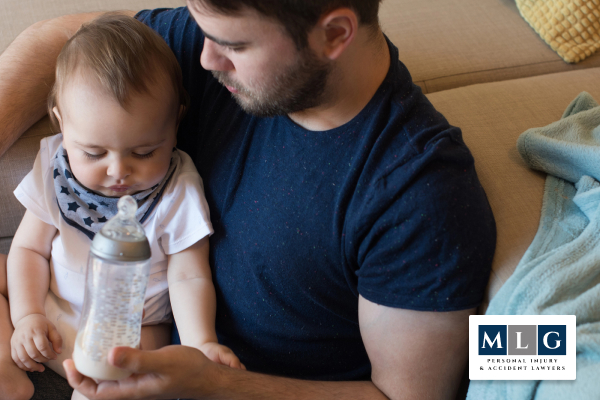
Birth injuries can happen during the process of childbirth and may affect a newborn's health significantly. They range from minor bruising to severe, long-term disabilities.
Understanding what constitutes a birth injury and its implications is crucial for new parents to recognize potential risks and seek appropriate care. These injuries are not only physically distressing but also emotionally challenging for families.
In many cases, birth injuries are preventable, which adds to the emotional weight felt by families. Healthcare providers need to follow strict medical guidelines to minimize the risk of these injuries. At Marcereau Law Group Injury & Accident Lawyers, we are here to fight for your family's rights.
Birth trauma can lead to newborn spinal cord injuries or even a brachial plexus birth palsy. Get the medical care needed for your child's birth injury first. Then, contact us for a full investigation into your child's injuries.
Birth injuries refer to any damage or harm a baby sustains during the childbirth process. They can also be called birth trauma. These injuries can range from superficial bruises to severe neurological damage that can impact a child's development and quality of life.
While some injuries may resolve quickly without treatment, others require ongoing medical intervention. Understanding these injuries is vital for parents and medical professionals to ensure that affected children receive the best possible care.
Many birth injuries are the result of physical pressure during the birth process. This can happen in difficult or prolonged deliveries. Risk factors such as the size of the baby, the position during labor, and the use of delivery tools can increase the chance of injury.
Parents should be aware of the common types of birth injuries, as early diagnosis and treatment can often improve outcomes. This knowledge is also crucial for making informed decisions about childbirth. They must understand when a medical mistake may have occurred.
Birth defects can involve blood vessels, a brachial plexus injury, or even an intracranial hemorrhage. In some cases, there could be intrauterine fetal demise.

Certain factors can increase the likelihood of birth injuries during labor and delivery, making it important for medical professionals to be vigilant in managing these risks.
Understanding these factors can help parents and healthcare providers take preventative measures to reduce the chances of complications.
Common factors that contribute to a higher risk of birth injuries include:
Serious birth injuries can have long-lasting consequences that affect a child's quality of life and development. These injuries may lead to physical, cognitive, and emotional challenges that persist throughout the child's life.
Understanding the potential long-term effects of serious birth injuries can help families prepare for the future and seek appropriate care.
Common long-term effects include:

Birth injuries can vary significantly in severity and impact on a child's life. Some of the most common injuries involve the nerves, brain, and bones.
Cerebral palsy is a neurological disorder that affects muscle coordination and body movement. It is often caused by brain injury during the birth process due to oxygen deprivation.
Children with cerebral palsy may require lifelong medical care and therapy. Early intervention and treatment can significantly improve the quality of life.
Erb's Palsy
Erb's palsy results from damage to the brachial plexus nerves that control the arm muscles. This injury often occurs when there's excessive pulling on the baby's head during delivery. Children with Erb's palsy may experience weakness or paralysis in the affected arm. Treatment typically involves physical therapy and sometimes surgery.
Klumpke's Palsy
Klumpke's palsy affects the lower brachial plexus nerves, which control the hand and forearm. This injury can occur if the baby's arm is abruptly pulled during delivery. Symptoms include paralysis of the forearm and hand, sometimes accompanied by a drooping eyelid on the opposite side. Recovery may require extensive rehabilitation.
Hypoxic-ischemic encephalopathy (HIE) is a serious condition resulting from limited oxygen supply to the baby's brain during delivery. HIE can lead to significant brain damage and lifelong disabilities. Immediate medical intervention can sometimes reduce the severity of the outcomes. Families dealing with HIE may face emotional and financial challenges.
Skull fractures in newborns can occur during difficult deliveries or from the improper use of delivery tools. While many skull fractures heal on their own, some may require surgical intervention. Bone injuries, including fractures during delivery, need careful management to prevent long-term complications. Early detection and treatment are critical.
Caput succedaneum is swelling of the soft tissues of the baby's scalp, which generally resolves without treatment. Cephalohematoma involves bleeding between the skull and its covering, which can lead to jaundice and, in severe cases, more serious conditions. Medical professionals typically monitor both to ensure they do not lead to further complications.
The causes of birth injuries are often related to the conditions and decisions made during delivery. Understanding these can help prevent injuries and provide necessary interventions.
Improper Use of Forceps or Vacuum Extraction
Forceps or vacuum extractors can assist in delivery, but their improper use can cause severe injuries like skull fractures or nerve damage.
It's crucial for medical professionals to use these tools only when necessary and with great care to minimize risks.
Delayed C-Section or Prolonged Labor
Delayed decisions to perform a cesarean section or allow labor to continue for too long can significantly increase the risk of birth injuries. Timely medical responses are essential when labor does not progress normally.
Failure to Monitor Fetal Distress
Monitoring the baby's heart rate during labor is critical to detect signs of distress. If signs of distress are not acted upon quickly, it can lead to conditions like HIE, which can have severe consequences.
Medication Errors During Delivery
Medication errors during delivery can cause serious problems, such as changes in the baby's heart rate or excessive bleeding in the mother. Proper dosages and monitoring are essential to prevent these errors.

Identifying the symptoms of birth injuries early on is crucial for proper diagnosis and timely treatment. Some signs may be immediately visible, while others can manifest as the child grows. Medical professionals use a variety of indicators to assess whether a birth injury has occurred.
Common symptoms that may lead to the diagnosis of a birth injury include:
Parents of children who have suffered birth injuries may face overwhelming emotional and financial challenges. However, they do have legal options to seek compensation and justice for the harm caused.
Taking legal action can help ensure that those responsible are held accountable and provide much-needed financial support for ongoing care.
Common legal options available to parents of children with birth injuries include:

If your child suffered a birth injury, you might feel overwhelmed and unsure about the next steps. Our Irvine birth injury lawyers support you through this challenging time.
Marcereau Law Group offers a free case consultation to discuss your situation and help you understand your legal options.
Our law firm is dedicated to helping families affected by birth injuries. We'll review your case details, advise on possible outcomes, and guide you through the legal process.
Contact us today to schedule a free consultation. We are committed to fighting for the compensation and support your family deserves.
Schedule Your Free Consultation
"*" indicates required fields


"*" indicates required fields